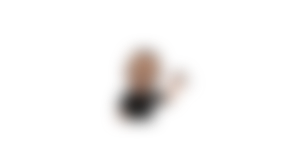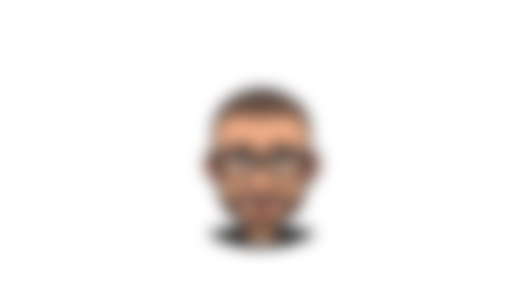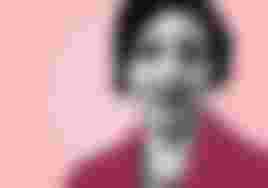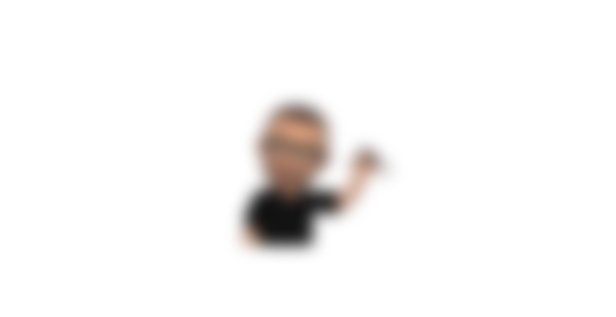This is the third and last installment of my essay, in which I have been pointing phenomenologically to the question of feeling and without further ado, I wish to continue with my ideas.
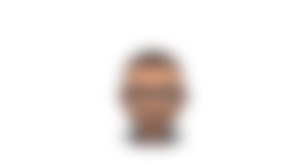
Art and poetry, a return to "things themselves" through the voice of silence.
The intention of this section is to approach phenomenologically the question of feeling as the genesis of art and poetry. We have sketched the context before, but it would seem strange, even paradoxical, to approach the return to things themselves as a phenomenological maxim, taking art and poetry as the axis and starting point.
To build a philosophical thread from the edges is not a simple task, something that María Zambrano and Merleau-Ponty did. This essay attempts to follow the strides of these philosophers, albeit at a crawl. Art and poetry seem not to be bearers of philosophical logos, but it is not about following the paradigm of modernity, but about doing philosophy from the non-philosophical, it is there, where art and poetry as artistic action configure the purest truth. The feeling as a stop in the superfluous teaches us to see the world differently as if we were listening to the voice of the absent. To see more than what is seen.
Following Friedrich Copleston in his section on Merleau-Ponty in his volume XVIII of the History of Philosophy where he states that the poet does not first have his poem "in his mind" in its state of inexpression and then expresses it. The poem emerges from the hidden, from inexpression. In any case, art and poetry are not mere deviations, but alternatives to the conception of thought.
-Getting to the heart of things
Phenomenology as a criterion for reflection, without forgetting that it is by taking feeling as a starting point in its unreflective reality, through which it is the genesis of logos, and thus breaking with the common procedure of modernity. It is evident that we must start from the examples that Zambrano and Merleau-Ponty can offer, but, first of all, we should explain what can be conceived as the search for the heart of things.
Every search and every question is born of ignorance, even if it is affirmed that there is "a heart" in things, it is to reveal that they have a center that does not belong to the sphere of logos. If logos is light, these dwell in darkness. "My dark side is that which shines the brightest, to darken the darkest." It is the ignorance of which nothing can be said and which says nothing that serves as a threshold for the logos, which in its questioning of the unknown seeks to bring to clarity that which lies in darkness. In the epistemological sense, not everything is in the dark, although the question is born of ignorance, I must have some light for what I ask, because, if ignorance says nothing and nothing can be said about it, the question "How do I ask," and we glimpse the paradox of knowledge. From ignorance is born the question to reach knowledge, but if I ignore, how is the question born, ergo, I cannot ignore everything. In a more poetic tone, we could unveil it in the following way: the heart of things lies in the dark, but they must have some clarity, perhaps a kind of battered shadow, which allows the chiaroscuros to ask in that fleeting moment of small lucidity, and bring to light, what lived in the darkness.
Now, we are in debt, because we have not approached the examples that at the beginning of this section have been promised. It is considered that this kind of finding the heart of things, has been the attempt of Zambrano and Merleau-Ponty. In the case of Ponty, his whole philosophy is an analysis of bodily intentionality that exposes the figuration of the invisible in the visible. To the point of being remembered as the philosopher who sees the invisible. In the case of María Zambrano, and as I mentioned before, more than a philosopher, which she evidently was, and also a poet, I like to treat her as a pythoness. Because Zambrano in her philosophizing action understands poiesis as an activity that accompanies things in their genesis and as a knowledge from the very root of being. Since the human being has a need to express himself by creating and this he achieves with philosophy united to poetry. Now, as a preamble to the following section, trying to advance in our navigation through these contemporary currents that wander between philosophy, poetry, art, feeling, and body, where there seem to be no borders, it bursts with the common proceeding. In these aspects, I relate both thinkers, they did philosophy from the edges of it, and I dare to say, that both had jumped to the other side, but because of the impossibility of narrating the unspeakable, they had no choice but to return to the border side of the words.
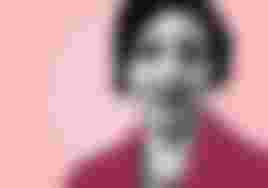
Source: https://ethic.es/2021/02/el-exilio-de-maria-zambrano/
- Art as a human creation, search for knowledge, and abolition of dualisms.
With what has been said, to speak of art is not a random task, but framed in Zambrano and Merleau-Ponty, in their conception of art as a human creation that allows the search for knowledge and that breaks with modernity, that is to say, the dualisms founded in Descartes, are abolished from the poietic conceptions.
For Merleau-Ponty, art is a creation that opens possible worlds. It is not a closed discourse, but allows openness, in other words, art becomes a model of understanding the world, and together with philosophy, it intends to see the common from the multiplicities of phenomena. Art as a discourse, and like all discourse, has two characteristics: first, it has a voice. And the second, it speaks to us. But we should ask ourselves how it speaks to us because it does not seem to do so in the same way as a scientific procedure, which is framed from the subject and the object. Merleau-Ponty affirms that the human body is a material and spiritual reality at the same time, we are embodied logos. Thus revealing his conception of "body-subject" as an overcoming of dualism and against any materialistic reductionism. Thus, perception as a mode of existence at a preconscious level responds to our concern about how art speaks to us. The world as a reality that can be perceived becomes the basis of all rationality and all existence. Art in its creative sphere, figures, as we said before, the invisible of the visible. This art means a metaphysical turn because man is not pure consciousness, there is a preconscious being. The being makes itself visible in and through man. Being is, more than something that can be preached, it is the dimension of the invisible of the visible. It is clear that, although it may lend itself to a religious interpretation, it does not represent the God of theism. It does not represent the God of theism.
In the case of Maria Zambrano with respect to art, one could, first of all, make a distinction between knowledge and knowledge. Knowledge is linked to the method. While Zambrano, and also Merleau-Ponty subordinate it to the "things themselves" that manifest themselves to us in the historical becoming. A path that traverses and travels through experience. Art and poetry have helped philosophy to see the world with other eyes. This "return to things themselves" that has been inherited from Husserl, what Zambrano would call the "heart" of things, is nothing more than paying attention and listening to the voice of silence. And thus, it differs from the method that stops the vital becoming, encapsulating it in a certain system. Zambrano is a thinker outside the system and does not conceptualize any, the closest, perhaps, her "poetic reason" but it is nothing more than a mediation between philosophy and poetry.
Art, as the name given to human creation, not only points to a search for knowledge but becomes an existence without splits, to return to the original state. Artistic expression in its abolition of dualisms is nothing more than de-authorization. Poiesis is the action of the soul, and this is that which links body and consciousness. To which Merleau-Ponty will say that the soul is the superior level of self-organization.
-The dream as immobility of a movement
This penultimate aspect of the essay on a joint phenomenology between Maurice Merleau-Ponty and Maria Zambrano will be nothing more than to point to the dream, as one of the aspects of life where feeling flourishes, although by my own criteria, I consider that the dream at first glance does not seem to be a subject that can be philosophically deepened, however, philosophy has been one of the places where the dream has been most thought of, even though, immersed in it, no questions can be asked.
Before our thinkers of feeling to call them somehow, perhaps with affection, there have been other philosophers who have said something about the dream, as it was: Husserl, Sartre and Gasset. And although while we are dreaming it is not possible for us to ask ourselves questions, it is not an impediment that from the dream it is not possible to do philosophy. Perhaps, the most praiseworthy thing when trying to expand the logos with poiesis, is to build a ground from phenomenology, where the dream can be taken out of its darkness. To bring it to the light. With what has been said, phenomenology is understood as a method, but in this case, it is not completely adhered to Husserl's phenomenology. And one could begin with the following definition of sleep: First of all, it is a passivity where the sleeping subject is delivered to a reality that makes all action impossible. Secondly, it is necessary to affirm that the dream lacks its own time, there is a sensation of being cloistered in the cosmos. Thirdly, there is a predominance of matter and the integration of physis; fourthly and lastly, the dreaming subject lacks space.
The parameters of the conception of the dream have already been pointed out. For Zambrano, the dream will show that the subject who is immersed in the dream is not an active subject, since he cannot express his will. He does not make the dream, he only inhabits it by suffering it, but in that suffering, there is a sensation. In my dream, I am not a mere spectator. Thus, we are opening paths in the understanding of the dream as the immobility of a movement, even if it is premature. The dream not only possesses passivity, but it is passivity in its essential reality, and from that background of shadows the action emerges, not as a philosophical question but as a sensitive relation from its preconscious reality. The understanding of the dream, by its occult nature, can help us to develop knowledge about the soul, a soul supported by the overcoming of the Cartesian dualisms that we have already mentioned above. And in the dream, we see the abolition in the dualistic sense, because the dream from its psyche is not separated from the body nor from consciousness. For Merleau-Ponty, the dream is the landscape without geography that we contemplate from our embodied reality. An embodied reality where passivity and activity intersect but not as juxtaposition. As Dastur says: "Experience is the singular inversion of activity into passivity." From Zambrano, we can contemplate how the "I" there is a double contemplation but they are not reversible the dreaming I have a passive knowledge because the dreaming I do not think. "It could be said that the oneiric space performs a spontaneous reduction of the geographical space until it reaches the subjective sources of our existence and manifests an original spatiality centered in the body itself."
And as one more aspect to highlight with respect to that spatiality of the dream in which the self is passively involved, because it knows by its perceptions not only of the dream but in the dream since it somehow suffers and feels them, for Merleau-Ponty the space of the dream is a depth and that thanks to it, the most secret act by which we elaborate our medium is staged. Therefore, it is affirmed that space is enjoyed by virtue of its depth. Which comes from the intimacy of the heart. And we enter the meadows of Zambrano, who defines the dream as the immobility of a movement. For this reason, we have named this section of this essay in such a way because in human life there is nothing immobile. And as a Greek philosopher would say, "Everything flows".
But to speak of Maria Zambrano with respect to the dream, it would be necessary to know that her conception of the dream is the creative dream. This comes to be accepted by the consciousness and by the soul and is the germ of creation. Because in the time of the creative dream it becomes like the model of the restitution of phenomenology of memory. By Zambrano, we affirm that thanks to a concentration of time. As it happens in the creative dream in the images that preserve the feeling. With what has been said, it can be said that this vision with respect to memory and the images that are concentrated in the time of the dream feed a possible experience, not as a cumulus of things living, but as things that we have reflected. Zambrano reveals a concern for the memory of a feeling. Ponty, for his part, is concerned with discerning how passivity, which is not opposed to activity, comes to establish from the phenomena of the dream how they illuminate passivity. With what has been said, we point to the common point of our philosophers. Both try to discover the pre-reflective level in which all reflection has its origin. That is, passivity is the other side of activity, not as its counterpart, but as its genesis. As Ponty describes it: the dream is the experience of the universal, but at the same time, an experience that is lived alone. And just, with what has been said, a pre-compression of the following section has been made.
-Dreaming, autopoietic passivity as part of lived life.
"In reality, all dreaming is already a certain awakening, because if it were not, dreams would go unnoticed." We have begun this section with the quote presented because with it we want to glimpse and unveil two aspects that are essential. The first is that the dream is not pure passivity and the second is that the dream transmits a recondite experience and can increase knowledge so that it can be acted upon by awakening from lethargy. This is the basis of Zambrano's creative dream because it is the most awakened and allows us to recover the hiddenness that is determinant for the attentive life. Now, there is a key point to be mentioned from Zambrano's point of view, because she conceives the creative dream as a priority when it is a monoeidetic dream, that is to say, it does not transmit history but intuits essences. And since the monoeidetic dreams were given light, it could be said of them that they are Hieroglyphics, enigmas to be deciphered. But they are not decipherable by means of analytical reason, this would be a mistake. But they are the extended reason because they are the poetic reasons. In these dreams, there is transcendence and there is the sign of the specifically human.
But in every dream, there is a temporal flow, although, without passivity, sense, and presence, there is no activity, time, nor temporal knowledge. Approaching this aspect from phenomenology, it can be truly affirmed that the human not only suffers his transcendence but also suffers his immanence. This makes his present (Here and Now) bodily. Not only does he suffer from passivity in dreams, but dreams, more than self-absorbed passivity, are manifestations and conditions of possibility. Dreams come to mean openness to the other. Activity in the awakening from lethargy. That is to say, everything we suffer from is affected by us.
With what has been said we have been pointing to the center of what could be called a Zambranian philosophy because it conceives the creative dream as the source of all thought and action. Merleau-Ponty describes it this way: "to see is always to see more than what is seen" and Zambrano would describe it this way: in order to see, one must forget oneself. Abandoning oneself to dreaming. In both, looking is the process in which something becomes visible to me. To look is to bring out of the darkness, to make the invisible visible, but not to lose its invisibility, although it may seem a paradox. It can be shown in the following way. Dreaming is both something universal in itself, as well as an individual experience. To abandon oneself to the dream, to the creative dream as the source of all thought, is to affirm that passivity is a step prior to activity, and that these are not opposed to each other. Passivity is given as a previous step, which in its suffering opens through feeling to expanded reason. So the apparent play on words, to see the invisible without it losing its property of invisibility, is to put in ink the process in some way of the creative dream. In the words of Pablo Picasso "I do not paint things as I see them but as I think them", here we would go a little further, perhaps Picasso could have pointed it out, but here we would affirm that to paint is to trace things as one dreams them. Action is preceded by passivity. "Art and poetry always helped philosophy to see differently, to "return to things themselves" (Husserl), to the heart (Zambrano), listening to the voice of their silence to grasp their mute reality, but as real as existence."
That mute logos cannot be expressed by the discursive mind, and yet it is indispensable for communication to take place. We enter the terrain of blank spaces, in the midst of word and word, there is a mute reality. The word is not born from anything, it is born from silence. In such a way the dream. For Maria Zambrano as well as for Merleau-Ponty, man is the being that transcends his mere being there of the initial dream. Because in the dream all frontiers disappear, that is to say, the dualistic frontiers such as body and world, person and body, among others. "The self is still present in dreams, albeit passively, a sleeping self that cloaks a dreaming self." With this statement, we unveil on the one hand that the creative passivity recreates that passive life that becomes part of the lived life, and on the other hand, that the dream only makes sense in relation to wakefulness, and that there is a continuity between the sleeping and the waking self. because it is remembering the dream, albeit in a clouded way.
Husserl would say: the dream self does not imagine, that is, it does not think, it only perceives, since it sees the dreamed things with vivacity. Only to the subject already awake the dreamed world is revealed to him as not perceived. But as an introspective reflection. Very different from Sartre who would call the dream as the consciousness of sleep. But to paraphrase López Sáenz, What dreams in us is neither the conscience nor the body but our existence that withdraws from the world of common life and allows itself imaginative variations on it. "To dream is not, then, to abandon the world, but to listen to its native secret." The dream comes to be one of the passivities that happen to us, the passivities that also question us but we can only give answers to their questions from a passionate reason for all the dimensions of life, even if they dwell in darkness. That is why it is important to reflect on these passive dimensions of our being, which, because they are passive, does not mean that they do not constitute us. To understand them as openness to the other which, from its unreflective constitutions, nourishes our reason. But Zambrano knew well the error of the separation between dream and wakefulness. She understood that there is a dream that can be lucid and also an awakening without ceasing to dream. The vital thing is that in the dream we do not ask ourselves questions, but the dream interrogates us from the native passivity of its phenomenon.
Thank you for reading and joining me in this essay
Greetings!!!
